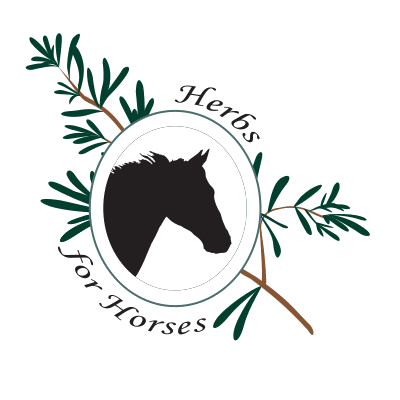Technical Report - A Pilot Investigation into the Efficacy of a Polyherbal Composite in Preventing Exercise-Induced Pulmonary Hemorrhage (EIPH) in Racing Thoroughbreds by Dr. Wendy Pearson
--
Technical Report
A Pilot Investigation into the Efficacy of a Polyherbal Composite in Preventing Exercise-Induced Pulmonary Hemorrhage (EIPH) in Racing Thoroughbreds
Dr. Wendy Pearson (former exercise rider for Roger)
Professor Animal Bioscience / Equine Nutrition U of Guelph
Introduction
Exercise-induced Pulmonary Hemorrhage (EIPH) is a debilitating condition that is ubiquitous among racehorses. Studies have suggested that the condition may be seen in as much as 55.2% of racing thoroughbreds1, and up to 87% in racing standardbreds2. The primary manifestation of EIPH is haemolytic effusion into the alveolar spaces of the lungs. It is commonly believed to be associated with poor racing performance and secondary respiratory infection and/or dysfunction. The mechanistic explanation for EIPH is not clearly understood and there is much disagreement among experts. A very common explanation is that the pulmonary capillaries fail to cope with the increased stress placed on them during extreme exertion. Capillaries are, by necessity, profoundly thin to allow for efficient gas exchange. Their fragile nature cannot accommodate the increased pressure, and when the equine athlete reaches peak exertion, the integrity of the capillary walls breaks down. The resulting effusion may be seen only by endoscopic examination, but horses with severe cases may bleed copiously from the nose.
Treatment of EIPH at the racetrack is most commonly attempted through the use of furosemide (lasix) and glycopyrrolate (robinul). These are diuretic drugs that are administered with the intent to reduce the pressure on the pulmonary capillaries. However, there is much controversy over this course of treatment, and some authors have challenged its efficacy3.
The current study was designed to provide some preliminary information on the efficacy of an herbal mixture in preventing the incidence and severity of EIPH in racing thoroughbreds.
Experimental Design
Test Material
The herbal mixture (‘Rutin’; Herbs for Horses; Guelph ON) was a combination of 5 botanical constituents: Horse-Chestnut (Aesculus hippocastanum), Hawthorn (Crataegus oxyacanthoides), Gingko (Ginko biloba), Rosemary (Rosmarinus officinalis) and Bioflavonoids. The constituents were selected for their traditional role in supporting the circulatory and cardiac systems (Table 1).
Horses
Seven thoroughbreds with known history of regular pulmonary bleeding were selected from Trainer Roger Atfields string at Payson Park Training Centre, FL. All horses were involved in a regular racing campaign. They were randomly allocated to a treatment group or control group. Treatment group (4 horses) received 1/2 cup of the polyherbal mixture twice daily in their regular ration, and this was continued for 70 days. The control group received their regular ration without any supplementation. A pre-supplementation fast work was conducted on all horses, then both groups were endoscopically examined after each fast work and race to determine incidence and severity of bleeding. If blood was present during the endoscopic exam, severity was graded on a scale of 1 to 5, with 5 being the most severe. Endoscopic examination was performed by the same veterinarian each time. Horses continued to receive their regular doses of lasix or robinul at the discretion of the trainer and veterinarian.
Table 1: Botanical Constituents of “Rutin”
|
Common Name |
Botanical Name |
Active Phytochemicals |
Primary Actions |
|
Horse-Chestnut |
Aesculus hippocastanum |
Coumarins, flavonoids (kaempferol, quercetin, astragalin isoquercetrin, rutin) saponins (aescin), tannins, allantoin, phytosterol |
Reduce capillary permeability, increases venous tone |
|
Rosemary |
Rosmarinus officinalis |
Flavonoids (diosmetin, diosmin, genkwanin), phenols (neochlorogenic and rosmarinic acids), volatile oil, terpenoids |
Carminative, spasmolytic, thymoleptic, sedative, diuretic, antimicrobial. |
|
Gingko |
Gingko biloba |
Flavonoids (quercetin, kaempferol, bilobetin, ginkgetin, isogenkgetin, sciadopitysin) Proanthocyanidins, terpenoids |
Reduces vascular permeability, improves cerebral circulation |
|
Hawthorn |
Crataegus oxyacanthoides |
Flavonoids (kaempferol, quercetin, procyanidin) |
Hypotensive, cardiotonic, coronary vasodilator |
Results
The incidence (Figure 1) and severity (Figure 2) of bleeding and was significantly reduced when horses received the test material.
Figure 1: Incidence of EIPH in test horses
Figure 2: Bleeding Severity Score in test horses
Discussion
The purpose of this small pilot study was to make preliminary field observations on a polyherbal mixture in the prevention of EIPH. With this small sample size, we observed a measureable decrease in the incidence and severity of EIPH. Some potentially confounding variables that may have contributed to these observations include:
Conclusions
This trial provided preliminary evidence for possible usefulness of a polyherbal mixture in the prevention of EIPH. We were able to demonstrate decreased incidence and severity of bleeding from the lungs, without any undesirable side-effects. It is recommended that further studies on this herbal composite incorporate a larger sample size on laboratory-housed animals that do not receive any other treatment besides the herbs in order to obtain more conclusive information on the efficacy of the product.
Acknowledgements
Research funded by Selected BioProducts Inc. (Herbs for Horses, Guelph ON). Our sincere gratitude is extended to Roger and Tracy Attfield and their dedicated staff for their generous donation of horses to this study.
References
1. Roberts, C. Hillidge, C., and Marlin, D. (1993) Exercise-Induced Pulmanry Haemorrhage in Racing Thoroughbreds in Great Britain. Proceedings of the International EIPH Conference, Guelph, Canada. pp. 12.
2. Lapointe, J-M, Vrins, A., and McCarvill, E. (1993) Exercise-Induced Pulmonary Haemorrhage (EIPH) in Racing Standardbred Horses in Quebec: Effect on Performance, and Effect of Air Temperature. Proceedings of the International EIPH Conference, Guelph, Canada. pp. 13.
3. Erickson, B.K. (1989) Does the Research Support Using Furosemide. Equine Athlete, 11(9):35-38.
